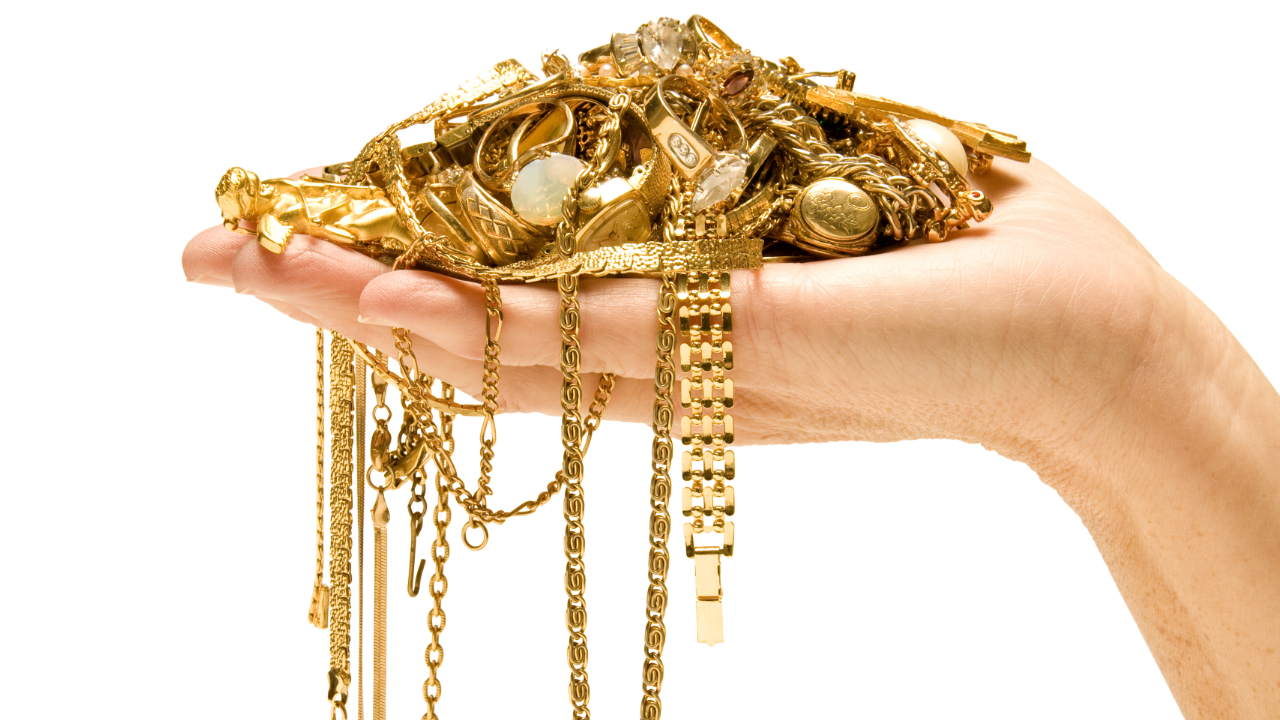The gold industry has been shaken after it was discovered
that 83 tons of fake gold bars have been used as collateral for loans
worth 20 billion yuan from 14 financial institutions to a major gold
jewelry manufacturer in Wuhan, China. This amount of gold “would be
equivalent to 22% of China’s annual gold production and 4.2% of the
state gold reserve as of 2019.”
Using 83 Tons of Fake Gold to Get Loans
One
of China’s largest gold jewelry manufacturers, Kingold Jewelry Inc.,
has been using fake gold to secure loans obtained from 14 Chinese
financial institutions, Caixin reported Monday. The loans were for 20
billion yuan ($2.8 billion) obtained over the past five years. The
Wuhan-based jewelry company was able to pass on the fake gold as pure
gold, using it as collateral for loans and insurance policies to cover
any losses. The publication detailed:
At least some of
83 tons of gold bars used as loan collateral turned out to be nothing
but gilded copper. That has left lenders holding the bag for the
remaining 16 billion yuan [$2.3 billion] of loans outstanding against
the bogus bars.
Founded by Jia Zhihong in 2002,
Kingold is the largest privately-owned gold processor in central China’s
Hubei province. The Nasdaq-listed company (NASDAQ: KGJI) was previously
a gold factory affiliated with the People’s Bank of China (PBOC) that
was split off from the central bank during a restructuring, the
publication conveyed. Kingold’s chairman and controlling shareholder,
the 59-year-old Jia served in the military in Wuhan and Guangzhou. He
previously managed gold mines owned by the People’s Liberation Army.

The
fake gold was first discovered in February when Dongguan Trust Co. Ltd.
tried to liquidate Kingold’s collateral to cover defaulted debts.
However, the gold bars turned out to be just “gilded copper alloy,” the
news outlet described, adding that “The news sent shockwaves through
Kingold’s creditors.” China Minsheng Trust Co. Ltd., one of Kingold’s
largest creditors, then obtained a court order to test Kingold’s gold
bars sitting in its coffers. The test result came back on May 22,
confirming that the gold bars were just copper alloy. Two other
creditors also tested Kingold’s pledged gold bars and found they were
fake, Caixin learned, adding:
The 83 tons of
purportedly pure gold … would be equivalent to 22% of China’s annual
gold production and 4.2% of the state gold reserve as of 2019.
According
to the news outlet, Chinese authorities are investigating how this
happened. While Jia flatly denies that anything is wrong with the
collateral his company put up, the Shanghai Gold Exchange, a gold
industry self-regulatory organization, disqualified Kingold as a member
on June 24.
Gold Market Dilemma and How Bitcoin Outshines Gold
The
news of China’s fake gold has been heavily discussed on social media,
with some questioning how much of the overall gold market is fake gold.
Saifedean Ammous, the author of the popular book “The Bitcoin Standard:
The Decentralized Alternative to Central Banking,” tweeted: “A quantity
[approximately] 20% of China’s annual gold production was found to be
fake. China is the world’s largest gold producer. How much more fake
gold is out there? Could gold’s market supply be growing at 5-15% every
year because of all the fake gold?”
New York Times bestselling
author Jim Rickards opined: “The problem with Wuhan is not only do they
lie about the [covid-19] virus, they lie about gold also. Wuhan looks
like the world center of counterfeit gold bars.”
Many
bitcoiners also chimed in on the fake gold discussions, comparing
gold’s attributes to bitcoin’s. Tyler Winklevoss of Gemini crypto
exchange noted, “This is why bitcoin is gold 2.0. It’s mathematically
impossible to counterfeit.”
Shapeshift CEO Erik Voorhees
commented, “I’m an advocate of gold, but one monetary attribute in which
bitcoin handily beats gold is ‘verifiability.’ With free software any
human (or machine) can verify bitcoin authenticity. Verifying gold
requires expertise and equipment, & hard to scale.” Parallax Digital
CEO Robert Breedlove tweeted:
Bitcoin is more
divisible, durable, portable, recognizable (which encompasses
verifiability), and scarce than gold. Bitcoin is also cheaper to
safeguard and less vulnerable to theft. I wonder which one the free
market will select?
source link : https://news.bitcoin.com/gold-industry-83-tons-fake-gold-bars-secure-2-billion-loans-china/











